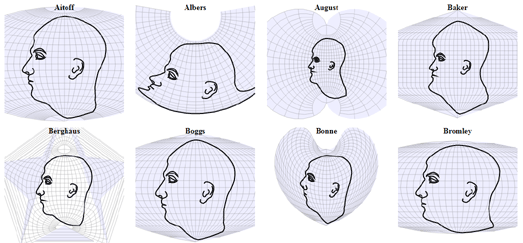
Earlier this week I asked readers of Maps Mania to draw the outline of London's West End on a map. The West End of London is one of those interesting geographical areas which has no universally accepted boundaries. According to Wikipedia the term 'West End' "is used colloquially by Londoners and is not an official geographical or municipal definition (and) its exact constituent parts are up for debate."
Because the West End has no agreed borders or boundaries I thought it would be interesting to see where people thought the West End was and to see which areas were generally accepted as being in the West End by the majority of people.
Here's the West End is an interactive map on which you can view all the shapes people drew in response to the question 'where is London's West End'. If you ask Google 'Where is the West End in London' it shows you a map of what Google thinks is the West End. As a point of reference I have included Google's defined West End area on my map. You can turn off Google's area on the map by pressing the 'Google's West End Border' button.
One very noticeable result of this survey is that most people define the West End as an area much larger than Google's definition of the West End. Most people seem to agree that the West End is north of the River Thames and most people seem to have used at least part of the river as the southern boundary of their West End. The eastern border of the West End is not so universally accepted. In my mind the West End stops at the border with the City of London. I think that most people seem to have a similar concept of where the eastern border of the West End is situated - although at least one person has a concept of the West End which stretches as far east as Bethnal Green and Hackney.
While the southern and eastern borders of the West End appear to be very close in a lot of people's minds there appears to be less agreement on the West End's northern and western boundaries. At least one person thinks that the West End stretches as far west as Heathrow. For some the West End includes Shepherd's Bush. However for many people the West End seems to end at Hyde Park (or at the end of Oxford Street).
Google's definition of the West End also has Oxford Street as its northern boundary. From the responses to my survey many people think that the West End stretches further north and the Marylebone Road seems to be a more popular boundary for the northern edge of the West End.

Here is my completely unscientific crowd-sourced definition of the West End - based purely on my own interpretation of the map survey results. This new crowd-sourced definition of the West End borders the City of London at its eastern extent, has a southern border along the Thames, has Marylebone Road as its northern border and stops at Hyde Park in the west.
This West End encompasses a far larger area than Google's West End. I am prepared to accept the southern, eastern and western borders of this definition of the West End. I am less happy with the northern border. I think I would agree with Google on this - and I would be far happier to use Oxford Street (rather than Marylebone Road) as the northern border.
Because there is no definite answer I am of course free to continue to think of the northern border of the West End as Oxford Street. And you are of course free to think of the West End in any way that you want. Perhaps we can all at least agree with Wikipedia that the West End is "the main commercial and entertainment centre of the city".
You can reuse my
Where is the West End map survey if you wish. If you want to create your own map survey tool just click on the fish
icon on my Where is the West End map and select the 'Remix on Glitch' option. You can then
clone my map and easily change it to survey any geographical area of your own choice.

















































